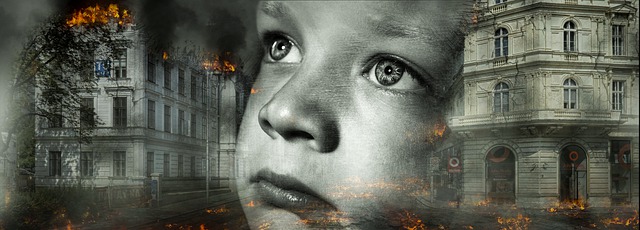It is with great anguish that we watch the destruction of Ukraine. This once vibrant nation is being mercifully bombarded and each Russian bullet and bomb exacts additional suffering and pain. Our prayers continue for the return of peace and prosperity for these beleaguered people.
It’s hard to imagine, but such carnage once came to our own valley. In September of 1864, after the Confederates lost the battles of Third Winchester and Fisher’s Hill, General Philip Sheridan led Union forces in devastating the entire valley.
Prior to this mission, Sheridan wrote to General Grant, “I think the best policy will be to let the burning of the crops be the end of the campaign.” Tragically, he burned much more than crops.
As Ray Neff writes in his book, Valley of the Shadow, the Yankees burned barns, mills, outbuildings, smokehouses, and everything having to do with supplying food to either soldiers or civilians. Large herds of cattle, sheep, and hogs were confiscated for Union use as were horses and mules.
Neff records that these raids were planned to wreak the greatest havoc possible and their timing was also scheduled to wipe out everything after the harvests were finished or crops were grown. “Barns would be bulging with hay and hogs would be fat and ready for slaughtering…Root cellars would be filled with vegetables for winter.”
After Union troops took all they could, they burned whatever was left including the woodlands. What wouldn’t burn was blasted. Thankfully, only one-third of the homes were destroyed and my own great great grandparents singed their hair throwing water on their house to keep it from catching from the barn that was burning nearby on Back Road.
As quoted in Norman Scott’s book, Shenandoah Iron, Sheridan bragged, “I have destroyed over 2,000 barns filled with wheat and hay and farming implements; over seventy mills filled with flour and wheat; have driven in front of the army over 4,000 head of stock and have killed and issued to the troops not less than 3,000 sheep. This destruction embraces the Luray Valley and the Little Fort Valley as well as the Main Valley.”
Imagine not only the financial loss but the mental toll this took on local residents. How would they survive the winter? Would they ever be able to rebuild? What would happen to their children? Such are the questions going through the minds of the Ukrainians right now.
Most valley inhabitants survived what is now infamously known as “The Burning” and its aftermath, but by the hardest. Volunteer vegetables that were usually weeded out became a main source of nourishment. Instead of coffee, sassafras tea was brewed and Neff reports that many later cringed at the smell of sassafras because of the bitter memories.
Thankfully, in Christian generosity, residents from Hardy, Pendleton, Grant, and Hampshire Counties in what was now West Virginia brought 11 wagonloads of supplies through Brock’s Gap above Broadway in April of 1865. There were hams, sausages, vegetables, fruits, and more. The beleaguered survivors were beyond grateful.
Neff mentions the Judy, Ketterman, Clark, Cosner, Haley and Barker families in particular as providing these lifesaving gifts. In the months to come, additional shipments continued to pour over the mountains and were distributed to all regardless of religious or political beliefs. What a special gift of healing and reconciliation.
Such work is currently being done in Ukraine. Samaritan’s Purse is one organization that is providing food and other relief supplies to some of the hardest hit areas utilizing a delivery network built by their Shoebox Ministry. The items are being given free to all who come to receive them. It’s a blessing to partner with them to be the hands and feet of Jesus and help others even as my own ancestors were helped here 158 years ago.
Pray for the people of Ukraine and if you are able, consider sharing a gift as well.
Blessings, George
